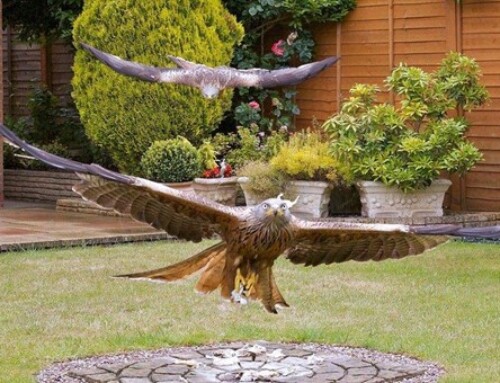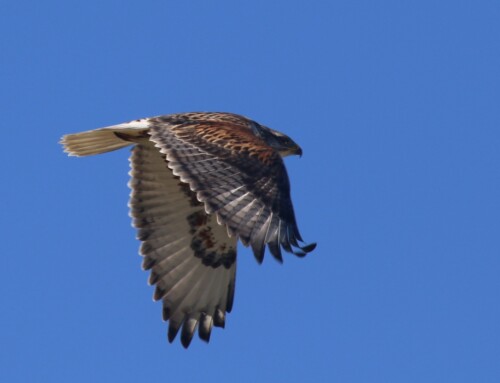GPS provide new insights on the impact of artificial lights on seabird fledglings
Cory’s Shearwater chick tagged with a GPS
data-logger and ring © Beneharo Rodríguez
LINKED PAPER
GPS tracking for mapping seabird mortality induced by light pollution.
Rodríguez, A., Rodríguez, B., Negro J.J. (2015). Scientific Reports 5: 10670.
DOI: 10.1038/srep10670
Petrels are one of the most endangered groups of birds (Croxall et al. 2012). On top of facing predation by introduced mammals and incidental bycatch, these seabirds have to deal with an emerging threat: light pollution.
Artificial lights are increasingly making the earth brighter at night, with adverse consequences for many species (Hölker et al. 2010). For example, petrel fledglings are attracted and disoriented by artificial lights when they leave their nests for the first time and fly towards the sea at night (Rodríguez et al. 2014 and references therein). Grounded birds are not able to take off again and they are exposed to several sources of mortality (collisions with infrastructures or vehicles, predation, dehydration or starvation). To mitigate light-induced mortality, rescue campaigns are conducted by local governments or NGOs. Despite the problem being known for a long time (Imber 1975 and references therein), the reasons why petrels become disorientated by lights are far from being fully understood. The majority of our knowledge about this phenomenon comes from observational data from rescue campaigns, and mainly consists of the reporting of species identification, individual numbers, dates and locations (Telfer et al. 1987, Le Corre et al. 2002, Rodríguez & Rodríguez 2009, Rodríguez et al. 2012b). Unfortunately, rescue campaigns cannot identify the colony of origin of birds grounded by artificial lights, and an important information gap arises around how far birds are attracted to lights.
In this study, we used the Cory’s Shearwater Calonectris diomedea as a model species, because of its relatively large size (600-800 g), abundance (2,000-3,000 breeding pairs on Tenerife Island) and high attraction rate to lights (note that groundings by lights have been reported in Azores, Madeira, Canaries and Mediterranean islands; Fontaine et al 2011, Rodríguez et al. 2012b, 2015). We employed GPS data-loggers to track the first flights of fledglings from nest-burrows to grounding locations in lit areas, and used ring recoveries to study the light pollution impact on colonies. We GPS-tagged the birds at colonies and we expected to recover the devices at the rescue campaigns.
Based on a previously estimated grounding rate for Cory’s Shearwaters on Tenerife, we expected to recover about 53% of the devices (Rodríguez & Rodríguez 2009). However, our recovery rate was disappointingly low (14%). This result has important implications for the management of the species, as it suggests that breeding population size has been underestimated. Taking into account the maximum and minimum number of rescued birds during the study period on the island (1,751 and 863 birds) and a mean productivity of 0.75 chicks/pair, a more coherent population size would be between 8,200 and 16,600 pairs, which is more than triple of the previous estimate.

Right: A Cory’s Shearwater fledgling grounded by artificial lights © Airam Rodríguez

The recoveries of rings at the rescue campaigns suggest that light pollution impact is more severe for inland colonies than coastal colonies. Birds fledging from inland colonies have to fly over built-up, light-polluted areas to reach the ocean, so are more likely to be grounded by lights. This agrees with findings reported for other species with coastal colonies, where a low proportion of the annually produced fledglings is grounded by lights, such as the Wedge-tailed Shearwater Ardenna pacificus on La Reunion Island, Indian Ocean, the Short-tailed Shearwater A. tenuirostris on Phillip Island, Australia, or the Balearic and Yelkouan Shearwaters Puffinus mauretanicus and P. yelkouan on Mediterranean islands (Le Corre et al. 2002, Laguna et al. 2014, Rodríguez et al. 2014, 2015).

References and/or further reading
Croxall, J.P., Butchart, S.H.M., Lascelles, B. Stattersfield, A.J., Sullivan, B., Symes, A. & Taylor, P. (2012) Seabird conservation status, threats and priority actions: a global assessment. Bird Conserv Int 22: 1-34. View.
Fontaine, R., Gimenez, O. & Bried, J. (2011) The impact of introduced predators, light-induced mortality of fledglings and poaching on the dynamics of the Cory’s shearwater (Calonectris diomedea) population from the Azores, northeastern subtropical Atlantic. Biol Conserv 144: 1998-2011. View.
Hölker, F., Moss, T., Griefahn, B, Kloas, W., Voigt, C.C., Henckel, D., Hänel, A., Kappeler, P.M., Völker, S., Schwope, A., Franke, S., Uhrlandt, D., Fischer, J., Klenke, R., Wolter, C. & Tockner, K. (2010) The dark side of light: a transdisciplinary research agenda for light pollution policy. Ecol Soc 15: 13. View.
Imber, M.J. (1975) Behaviour of petrels in relation to the moon and artificial lights. Notornis 22: 302-306. View.
Laguna, J.M., Barbara, N. & Metzger, B. (2014) Light pollution impact on ‘‘tubenose’’ seabirds: an overview of areas of concern in the Maltese Islands. BirdLife Malta. https://www.birdlifemalta.org/photos/otherfiles/5922.pdf. Accessed 1 Dec 2014
Le Corre, M., Ollivier, A., Ribes, S. & Jouventin, P. (2002) Light-induced mortality of petrels: a 4-year study from Réunion Island (Indian Ocean). Biol Conserv 105: 93-102. View.
Rodríguez, A. & Rodríguez, B. (2009) Attraction of petrels to artificial lights in the Canary Islands: effect of the moon phase and age class. Ibis 151: 299-310. View.
Rodríguez, A., Rodríguez, B., Curbelo, A., Pérez, A., Marrero, S. & Negro, J.j. (2012a) Factors affecting mortality of shearwaters stranded by light pollution. Anim Conserv 15: 519-526. View.
Rodríguez, A., Rodríguez, B. & Lucas, M.P. (2012b) Trends in numbers of petrels attracted to artificial lights suggest population declines in Tenerife, Canary Islands. Ibis 154: 167-172. View.
Rodríguez, A., Burgan, G., Dann, P., Jessop, R,. Negro, J.J. & Chiaradia, A. (2014) Fatal Attraction of Short-Tailed Shearwaters to Artificial Lights. Plos One 9: e110114. View.
Rodríguez, A., Rodríguez, B. & Negro, J.J. (2015) GPS tracking for mapping seabirdmortality induced by light pollution. Sci Rep 5: 10670. View.
Rodríguez, A., García, D., Rodríguez, B., Esteban, C., Lluís, P. & Pere, P. (2015) Artificial lights and seabirds: is light pollution a threat for the threatened Balearic petrels? J Ornithol DOI: 10.1007/s10336-015-1232-3. View.
Telfer, T.C., Sincock, J.L., Byrd, G.V. & Reed, J.R. (1987) Attraction of Hawaiian seabirds to lights: conservation efforts and effects of moon phase. Wildl Soc Bull 15: 406-413. View.
If you want to write about your research in #theBOUblog, then please see here.




